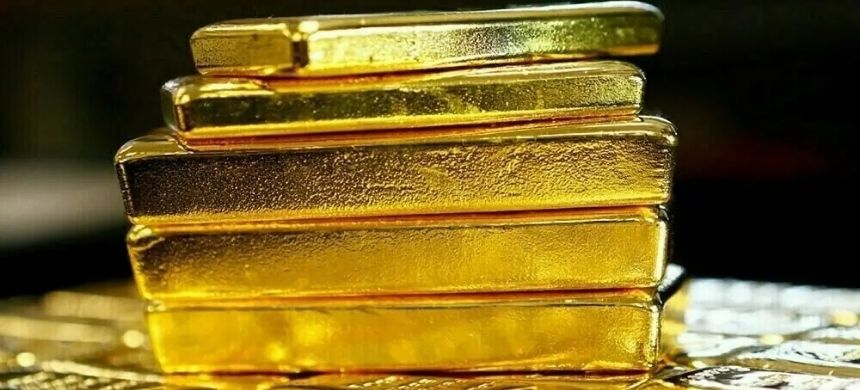Gold prices soared above $4,100 per ounce for the first time on Monday, marking a new record high. The surge came as renewed U.S.-China trade tensions and growing expectations of Federal Reserve rate cuts pushed investors toward safe-haven assets.
According to Reuters, spot gold rose by 2.2% to $4,106.48 per ounce, after touching an unprecedented $4,116.77 earlier in the session. Meanwhile, U.S. gold futures for December delivery jumped 3.3% to $4,133, extending the metal’s strong upward trend.
So far in 2025, gold has gained 56%, breaking the $4,000 mark for the first time last week. Analysts say the rally is being fueled by persistent economic uncertainty, central bank purchases, and expectations that the Federal Reserve will soon begin cutting interest rates.
Market expert Phillip Streible, from Blue Line Futures, noted that gold could reach $5,000 by 2026. He cited central bank demand, strong inflows into gold-backed exchange-traded funds (ETFs), and easing monetary policy as major contributors to the metal’s strength.
The latest boost came after U.S. President Donald Trump reignited trade tensions with China, effectively ending a fragile truce between the two major economies. Following this development, traders have priced in a 97% probability of a 25-basis-point Fed rate cut in October and a 100% chance of another reduction in December.
Analysts from Bank of America and Societe Generale now forecast that gold will reach $5,000 by 2026, while Standard Chartered raised its average price projection to $4,488. However, some experts suggest that a brief correction could be healthy before the next rally phase.
In other related news also read Gold Rates in Pakistan: Latest Updates and Market Trends
Other precious metals also benefited from the same factors driving gold higher. Silver climbed 3.1% to $51.82 per ounce, touching a record $52.12 earlier in the day. Meanwhile, platinum gained 3.9% to $1,648.25, and palladium advanced 5.2% to $1,478.94.
The sharp rise in gold and other metals highlights investors’ growing preference for safe-haven assets amid uncertain global economic conditions.











